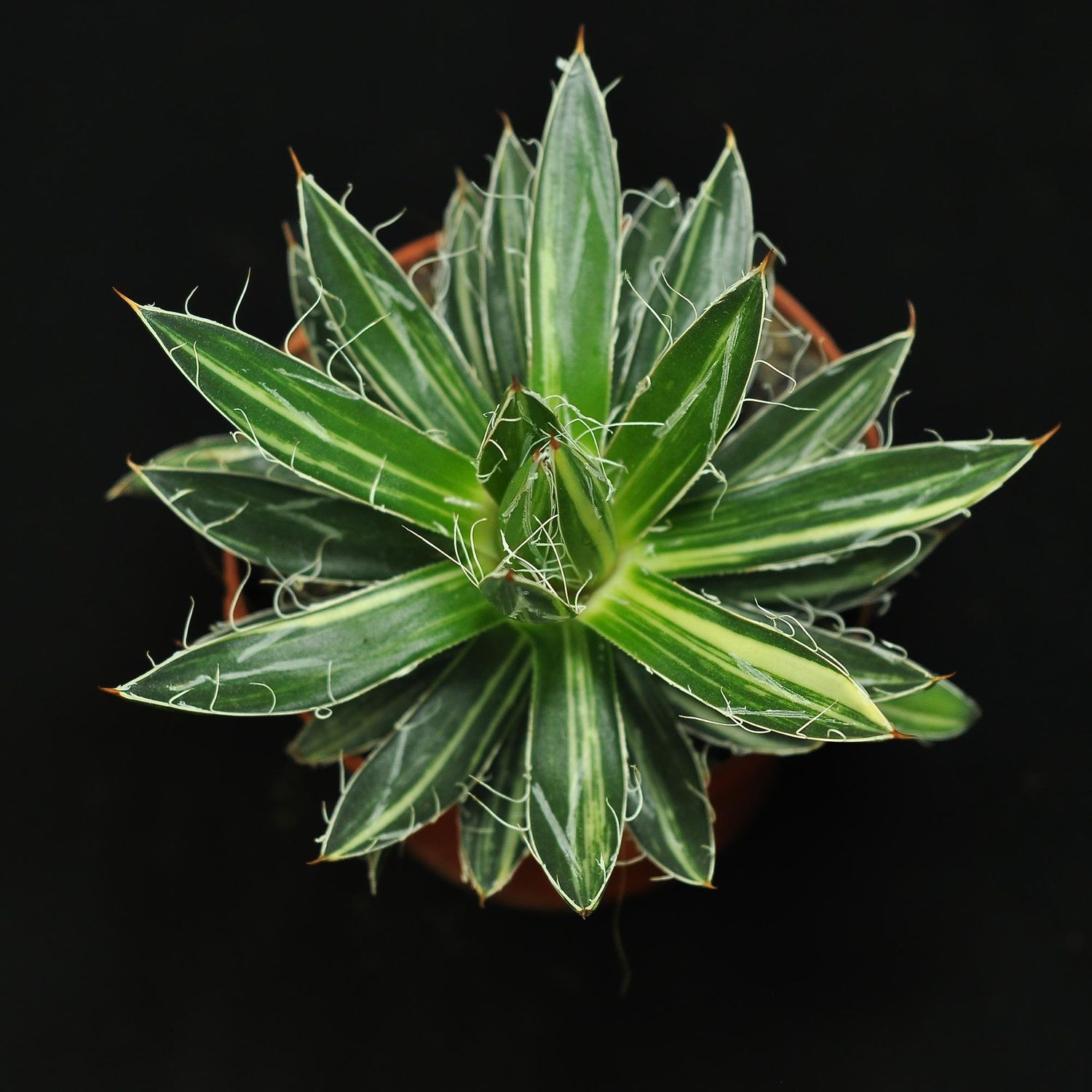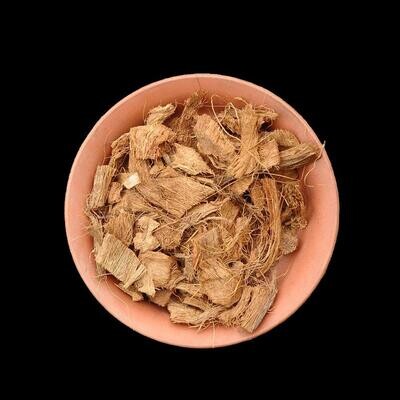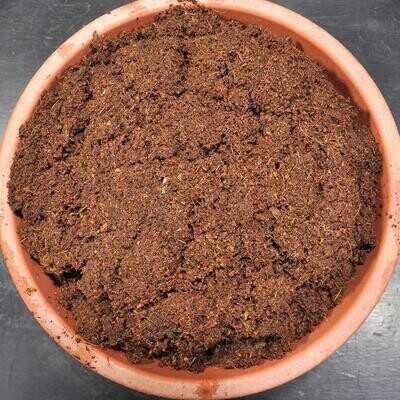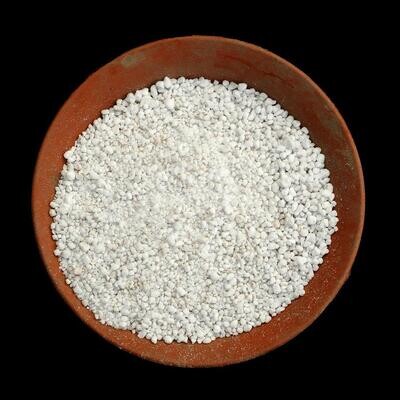Please check the Shipping Updates Page for information on shipping.
Agave filifera f. variegata
Synonyms:
Agave filifera var. variegata
Origin of Name:
The genus name "Agave" is derived from the Greek word "agave," meaning "noble" or "magnificent," reflecting the plant's impressive stature. The species "filifera" translates to "thread-bearing," referring to the long, fibrous threads that emerge from the leaf margins. The term "variegata" indicates the presence of variegated leaf patterns, which distinguish this form from its non-variegated counterparts.
Origin of Plant:
Agave filifera f. variegata is native to the mountainous regions of Mexico, particularly in the states of San Luis Potosí and Nuevo León. It typically inhabits arid, rocky slopes where it has adapted to thrive in dry conditions.
Short Description:
Agave filifera f. variegata is a succulent perennial characterized by its rosette form and striking leaves that display a creamy white or yellow margin surrounded by dark green. The leaves are long, lanceolate, and adorned with prominent, thin threads that give the plant a textured appearance. In spring and summer, it produces a tall flowering stalk with yellow-green flowers, which can attract pollinators and add aesthetic value in gardens.
Conservation Status:
While not currently listed as threatened, the native habitats of Agave filifera f. variegata may face risks from habitat loss and climate changes. Our plants are nursery-produced, promoting sustainable cultivation practices that do not negatively impact wild populations.
Care Instructions:
Agave filifera f. variegata prefers a well-draining soil mix, such as a cactus potting mix, and thrives in full sun. Water sparingly, allowing the soil to dry out completely between waterings, as overwatering can lead to root rot. During the winter months, reduce watering significantly, as the plant enters dormancy. Fertilization with a low-nitrogen cactus fertilizer can be applied sparingly during the active growing season. This agave is best suited for outdoor or bright indoor environments and should be protected from frost.





